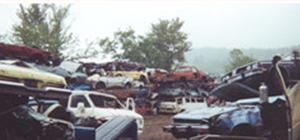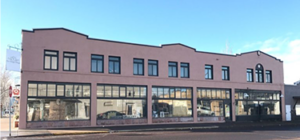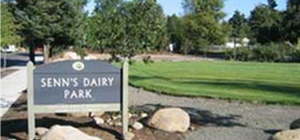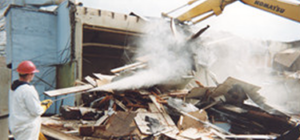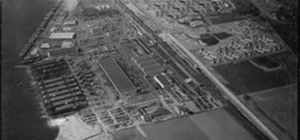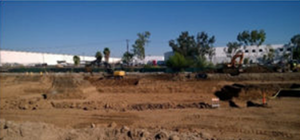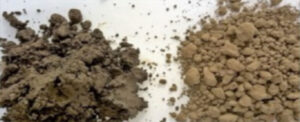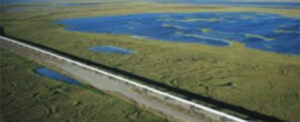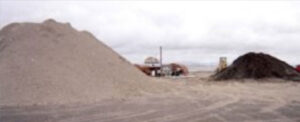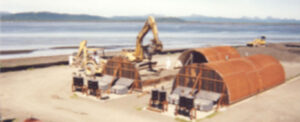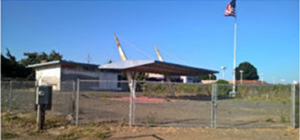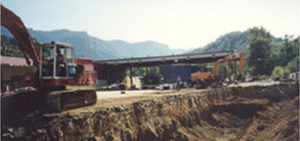Our Mission and Story
Ezraterra—What’s in the name?
EZRATERRA = “Helping Earth”
Ezra = “Helping” (hebrew); Terra = “Earth” or “Land” (latin).
Our mission: “Helping Earth overcome adversity with clean technology.”
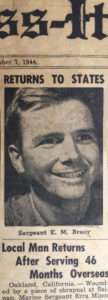
That’s what we do. Land, once polluted and useless, is now transformed into property pure enough to build a business, construct a home or even grow vegetables.
Ezra was also the founder’s grandfather. Patrick Brady, Registered Geologist, Chief Technology Officer and Chairman of Ezraterra, and the inventor of the Sintered Wave Technology®, so inspired by his Grandfather Ezra’s World War II stories of tenacity and camaraderie, named his company for the decorated Marine veteran.
Brady remembers his Grandfather Ezra Brady’s war stories. The patriarch was part of the initial landing force on Tarawa, in the South Pacific Theater, where 7,000 men died in short order, mostly by Japanese machine gun fire. “I shouldn’t be alive’. He always said that.” Ezra Brady was one of the three men in his unit to survive, and while lying on the deck of a medical ship bleeding from a fractured skull, Ezra Brady knew he looked like a dead man. He watched mute while other soldiers were “buried at sea.” Aka tossed overboard. Not Ezra Brady. Not that day. The wounded Marine mustered up the last of his strength simply to…raise his hand.
It worked! A nurse saw his raised hand and immediately gurneyed Ezra into surgery.
Ezra Brady voted for his own life that day, and lived to tell his stories—to his children, then to his grandchildren, including Ezraterra’s own Patrick Brady. When the younger Brady wanted to follow in his grandfather’s footsteps, the wise patriarch said, “Go to college. Education gives you choices.”
And what choices Brady made with that education.
A Better Way
Brady Geology degree was utilized first on oil rigs, examining the sand and mud extracted in the offshore drilling process. Brady noticed the byproduct: toxic oil-laden sand, that once shipped to the shore simply sat in rancid piles. What a dirty and costly way to do business.
“Could there be a more efficient, cost effective, cleaner way?” Brady wondered.
Later in his career, after working in the field of gold mine water supply, Brady’s work took him into contaminated soil remediation, where he was introduced to an apparatus called a ‘rotary kiln’, which tumbles polluted dirt much like the drum of a clothes dryer. A natural gas flame sears away contaminants. The result: the waste of the finite resource; more pollution—and burnt sterile dirt!
There is a better way, Brady kept thinking.
So, what does a scientist do when he sees a problem? If you’re Patrick Brady, you take your hand-sketched documents, your engineering calculations, your life savings, your burning vision of a better way, and you go…to the junkyard! You round up some scruffy welder to fashion an apparatus for cleaning up all that dirty dirt.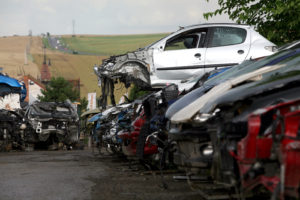
Brady then took his found treasures, hack-sawed and welded a prototype. This was first known as the “Soil Oven”, equipped with the technology he and his twin brother, John dubbed Permeation Bed Technology. With high hopes the brothers loaded the machine with contaminated earth and ventured up the Arctic for a trial run. They flipped the switch in hopes to hear magic begin. Nothing. But there was no stopping the Geologist turned inventor. Brady simply slipped the laptop from his briefcase and reworked the engineering calculations. The problem was immediately apparent: One of the conduits was too small. Of course. Hacksaw and larger conduit in hand, Brady adapted the prototype on site. Success!
Brady took the next version of the technology, Evaporative Desorption, on the road, ferried on a flat-bed eighteen wheeler, followed closely behind by an excavation loader and a pink upholstered RV. “Dirt in a box,” Brady jokes, simplifying the brilliant process. “Just like baking a cake,” Brady would tell the crowds, which would inevitably gather. Sometimes they were curious at the sight of strange equipment and moving earth, or at the sound of the low engine hum and the whoosh of blowing air. Brady was interviewed by news crews. Mayors wanted to chat. Wealthy community members invited Brady to their parties. Later, with the news of Brady’s clean-up efforts, crowds became more than curious—they were grateful.
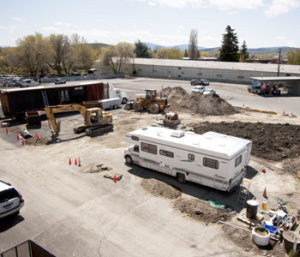 The contaminated eyesore of a property—It was in their city. It was in their neighborhood.
The contaminated eyesore of a property—It was in their city. It was in their neighborhood.
It was in the place they called home. Brady recounts one particular moment that is now permanently ingrained in his memory. The moment he knew he was doing something that mattered. He smiles, remembering the late model Cadillac approaching the Corvallis, Oregon job site. “I can’t even see the driver,” one of Brady’s crew says. Another points. “I think I see some white hair.” A small-framed, white-haired woman swings open the car door, reaches in the back seat and starts across the rocky site. She’s steely-eyed. She’s smiling. She has chocolate chip cookies! Brady offers her his old green and white lawn chair. “This was a slaughterhouse, back in the day,” she starts. “Then a meth-lab.” Thank you for improving the health and future of our neighborhood.
Land Transformed
Since that day, many sites have been made clean and viable again, some Brady even foot the bill for, like the once polluted, blight of a property where Portland’s Senn’s Dairy once operated. After years as a run-down, polluted site, this acre of city land has been transformed into a park, where children play and families gather. Brady did all the clean-up pro bono.

The Next Generation Technology
PFAS has changed everything. A long-time client asked Brady to figure out PFAS. Brady went back to the drawing board and found PFAS science was tangential to engineering, geology, chemistry, and toxicology. The science of Rheology proved to be the relevant discipline to solve the PFAS problem. Rheology is the study of flow and deformation of non-Newtonian fluids.
PFAS was created to manipulate Gibbs Free Energy at interfaces. PFAS modifies wetting kinetics of surfaces (think Teflon) and creates emulsions that create films (think of AFFF firefighting foam). PFAS basically holds formulations together. Think of a formulation like a house. A typical house weighs 130,000 pounds held together by 80 pounds of nails. PFAS are the nails of the formulation.
Our Sintered Wave Technology is a Rheology based PFAS removal technology. We safely deconstruct PFAS formulation nanostructure to liberate PFAS for safe removal. We do not destroy PFAS; we condense and collect it for potential recycling or for lower throughput destruction technologies.
With Ezraterra, Patrick Brady has raised his hand, just like his grandfather Ezra—this time voting for the Earth: Our home. Our livelihood. Our future. The place we leave to the coming generations.
We are Ezraterra. Join us in the effort to clean up our earth.

